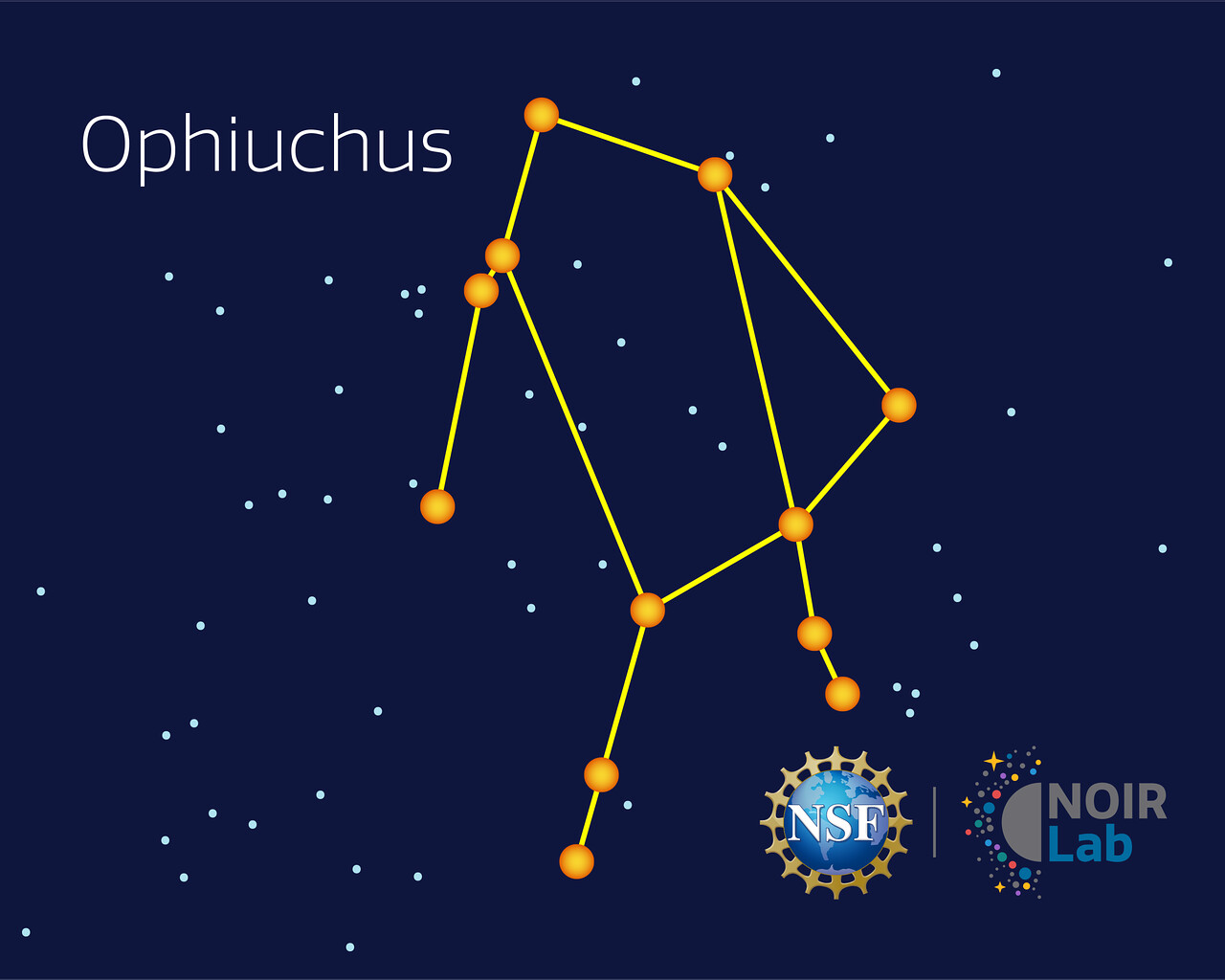Ophiuchus
Origin
Ophiuchus is dervied from he Greek term “ophis” ὄφις which means “serpent”.
Ophiuchus is associated with a figure from Greek mythology named Asclepius, who was a legendary healer and physician. According to the myth, Asclepius was exceptionally skilled in the art of medicine and possessed the ability to resurrect the dead.
The story goes that Asclepius learned the secrets of healing from a serpent. In one version of the myth, he was taught by the serpent when he observed a snake bringing healing herbs to another injured snake. Asclepius used this knowledge to become a renowned physician, and he became so skilled that he could even bring the dead back to life. This act of reviving the dead caught the attention of the gods, particularly Hades, the god of the underworld, who was concerned that Asclepius would upset the balance between life and death. As a result, Zeus, the king of the gods, struck Asclepius down with a thunderbolt and placed him among the stars as the constellation Ophiuchus.
The ecliptic passes through Ophiuchus. The Sun, Moon and the planets pass through this constellations as seen from Earth.
Bright Stars
- Rasalhague (Alpha Ophiuchi): Rasalhague is the brightest star in Ophiuchus. It is a binary star system composed of a white main sequence star and a fainter companion.
- Cebalrai (Beta Ophiuchi): Cebalrai is a red giant star.
- Sabik (Eta Ophiuchi): Sabik is a binary star system consisting of two blue-white stars.
- Yed Prior (Delta Ophiuchi) and Yed Posterior (Epsilon Ophiuchi): These two stars are an optical double star.


 Photo of the constellation Ophiuchus produced by NOIRLab in collaboration with Eckhard Slawik, a German astrophotographer.
The annotations are from a standardized set of 88 western IAU constellations and stick figures from Sky & Telescope. Please find here a non-annotated version of the image.
Photo of the constellation Ophiuchus produced by NOIRLab in collaboration with Eckhard Slawik, a German astrophotographer.
The annotations are from a standardized set of 88 western IAU constellations and stick figures from Sky & Telescope. Please find here a non-annotated version of the image.
Credit: E. Slawik/NOIRLab/NSF/AURA/M. Zamani
Notable Objects
Messier 10 and Messier 12 (Globular Clusters): These two globular clusters are relatively close to each other and can be found in the western part of Ophiuchus. They are both excellent targets for small telescopes. Messier 10 and Messier 12 are rich in stars and appear as dense, spherical clusters of stars.
Messier 14 (Globular Cluster): Located near the border between Ophiuchus and Serpens, Messier 14 has a dense core and is relatively easy to spot in small telescopes.
Messier 19 (Globular Cluster): Messier 19 is one of the most oblate globular clusters, which means it has a more flattened appearance compared to others. This can make it an interesting visual target.
Messier 62 (Globular Cluster): Messier 62 is a bright and compact globular cluster situated in the eastern part of Ophiuchus. It is easily visible in small telescopes and has a dense core.













